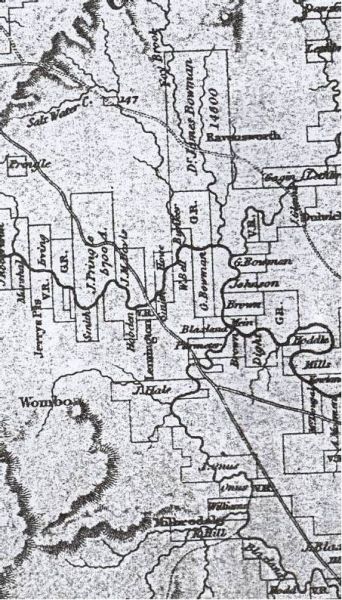Robert Dawson
Goorangula - Map 5
In 1824 he was appointed Agent for the Australian Agricultural Company. He sailed for Australia with livestock and supplies and employees of the Company on two ships, the Brothers and the York in 1825. Some of those accompanying him on the York were: William Barnes, shepherd, Charles Beal, carpenter; Charles Hall, woolsorter; and William Telfer, Overseer.
And on the Brothers: John Adams, Blacksmith; John Armstrong, surveyor; Henry Blackford, butcher; John King, ploughman; Everitt Simmonds, groom; John Simmonds, groom; William Smyth, wheelwright; John Stokes, dairyman; Andrew Telfer, shepherd; Thomas Tulk, bricklayer and Dawson's nephew John Dawson.
Select here to read extracts from Robert Dawson's 'Present State of Australia' in which he describes the country side north of Port Stephens and gives an account of the natives who accompanied him on his journey.
In February 1827 Robert Dawson commissioned William Cromarty an able sailor, to attempt an entry of the Manning River from the sea and to chart its channels. The Barnard-Manning Rivers system had been explored in 1825 by Henry Dangar and named by Dawson in honour of William Manning, Deputy Governor of the Australian Agricultural Company.
Dawson worked hard to establish the Company's estate at Port Stephens however his tenure with the Company was fraught with difficulties from the time he reached Australia. He clashed with the very influential committee members of the Company who undermined his achievements. This resulted in his suspension from duties after a hasty enquiry. His wife and daughter had died during his time in Australia and in 1828 he returned to England where he published details of his experience with the Sydney Committee and London Directors.
An interesting incident took place on the voyage home......
In 1829 a Court Case took place in England -
DAWSON V. NESBIT......
The plaintiff (Dawson) who had gone out to Sydney as agent to the Australian Agricultural Company, was coming home to England by a return convict ship on board of which was also Mr. (Alexander) Nesbit a superintendent surgeon of convicts. One evening, at tea, the conversation between these two passengers turned upon the hot winds which prevail in those latitudes. Mr. Nesbit said they always blew with great violence. Mr. Dawson observed that the hot winds themselves were not violent, but were generally followed by squalls. The defendant declared he was satisfied they blew with violence, because he knew of boats having been upset by them. The plaintiff nevertheless maintained his opinion, and said he did not believe that such was the case, although.......The defendant, without suffering him to finish his sentence, struck him a blow on the nose, which drew blood, asking him at the same time how he presumed to contradict him? The plaintiff replied, that if he had not struck him, he was about to have added, although I known you would not say so if you did not think it. The defendant then expressed his regret for the blow he had given him, and invited the plaintiff to shake hands; which invitation, however, he declined to accept, and left the ship on the first opportunity, to return home by one in which he would be relieved from the company of Mr. Nesbit. Verdict for the plaintiff. Damages £100..(Times [London, England] 4 Nov. 1829: 4. The Times Digital Archive. Web. 11 Mar. 2013.)

Later Dawson returned to Australia with a new wife and young son. He had received a land grant of 1280 acres from Governor Bourke in March 1836, and after visiting the area east of Singleton and being impressed with the beauty of the area he determined to take up his grant at Goorangula Creek. He named the estate Goorangula. The estate can be seen at the top right corner of this map
In 1840 he received a grant of 100 acres at Little Redhead which he sold 20 years later to James Mitchell when he returned to England.
Death
Robert Dawson died in England in 1866.Notes and Links
Robert Dawson was in Newcastle in December 1839 when members of the United States Exploring Expedition visited the district.↑
